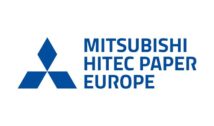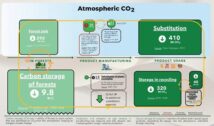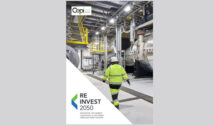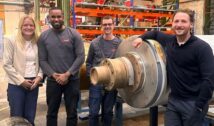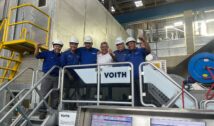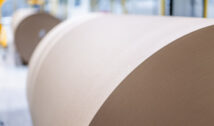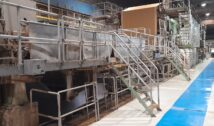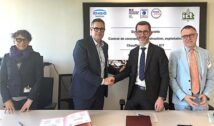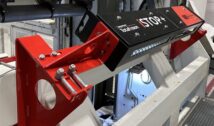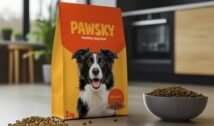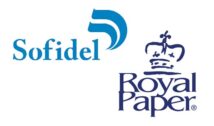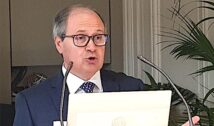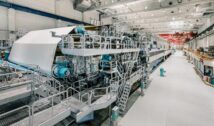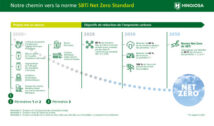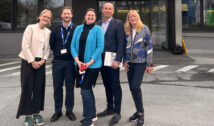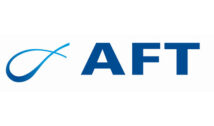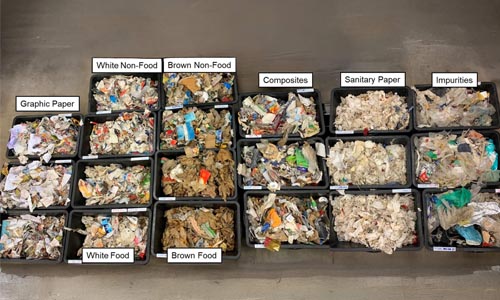
The demand for sustainable solutions in packaging has never been higher, particularly in the food industry, where consumers are increasingly drawn to products that promise environmental responsibility. This trend has sparked a significant shift towards paper-based packaging, driven by market forces and regulatory imperatives. The global paper packaging market is expected to reach USD 75.64 billion in North America and USD 97.6 billion in Europe by 2025, with CAGRs of 3.9% and 4.8%, respectively, by 2030. The food industry is a key driver, with liquid cartons becoming one of the fastest-growing packaging types, fueled by consumer preference and sustainability goals. However, recycling remains a significant challenge.
Despite the rapid adoption of paper solutions, a considerable amount of paper, especially from mixed waste streams, remains unrecycled. Studies have revealed that, in Germany, lightweight packaging waste could supply 100,000 tons of high-quality paper annually, yet persistent challenges hinder its potential. The EnEWA project, led by STADLER Anlagenbau GmbH and industry partners, has demonstrated the technical feasibility of recycling paper from mixed waste, but regulatory barriers remain.
The Rising Challenge of Paper-based Packaging
The food industry is witnessing a remarkable shift towards paper packaging, driven by environmental concerns and consumer demand. Companies are heavily investing in sustainable paper solutions, such as Pulpex’s paper bottles made from responsibly sourced wood pulp. However, recycling, particularly from composite packaging, remains a challenge. The combination of paper, plastic, and aluminum layers complicates the recycling process, making it energy-intensive and prone to contamination, while regulatory obstacles further hinder progress.
The Regulatory Hurdle
The regulatory landscape is designed to ensure the safety and quality of recycled materials used in food contact applications, though approaches vary. EU regulations are prescriptive, with a high level of scrutiny on the sources of recycled fibers, which poses challenges for using mixed waste paper in food packaging. North American regulations, on the other hand, focus more on general safety and good manufacturing practices, allowing more flexibility but placing greater responsibility on manufacturers to ensure compliance.
“The EnEWA project has shown that with the right technological adjustments, such as improved sorting and sanitization processes, high-quality paper can be recycled from mixed waste streams,” explains Annika Ludes, Product Engineer at STADLER. “However, to fully realize this potential, changes in the regulatory landscape are essential. Amendments to guidelines could pave the way for more sustainable use of recycled paper in the food industry.”
The EnEWA Project’s Contributions
The EnEWA project has provided compelling evidence that recycling paper from mixed waste is technically feasible. It demonstrated that through innovative sorting technologies and adapted processes with dry-mechanical sorting, wet processing, and sanitization, secondary fibers could be obtained and used in paper production without significant contamination issues. Sorting technologies such as Near-Infrared (NIR) sensors were optimized to identify and separate composites. Additionally, processes like hot dispersion under overpressure successfully reduced microbiological contamination.
Beyond technological advancements, the EnEWA project has engaged with regulatory authorities and developed recommendations towards a more flexible regulatory approach to regulations, backed by scientific data from worst-case scenario experiments.
The Future of Paper Recycling
The EnEWA project has put the spotlight on the untapped potential of paper recycling, showing that the technology exists to recycle significant amounts of paper from mixed waste. However, unlocking this potential requires a concerted effort to overcome regulatory barriers and improve waste management practices. By addressing these challenges, we can turn what is currently a lost resource into a cornerstone of sustainable packaging, driving the industry towards a more circular and environmentally friendly future.


